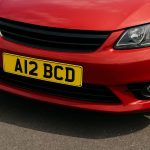Spending a vacation at a lake or riverside in your inflatable dinghy or kayak can be a great idea. However, it may be useful if you equip your lightweight vessel with a portable engine. It is no longer necessary to buy a fuel-guzzling motor to power your recreational boats. You can opt for compact electric engines to power your vessel. The benefits of choosing such electric outboard motors are numerous, but you must conduct thorough research. Ideally, you can look for compact, feature-rich models such as ePropulsion eLite.
Focus on efficacy and performance, not just raw horsepower
When you’re looking for an electric engine for your small or recreational vessel, you don’t need a massive horsepower boost. The reality is that overpowered motors can weigh down your boat, waste energy, and reduce handling comfort.
Most of the time, you will be using your kayak or catamaran in calm lake or river water—not amidst choppy waves in turbulent sea. Whether you’re heading out for a quiet paddle or launching from your boathouse, check thrust efficiency and how well the motor performs in calm water with moderate loads. For example, a 500W electric motor delivers the equivalent of approximately 1.5 HP.
Battery type used: Built-in or modular?
You will find compact electric engines for lightweight vessels in two types: with integrated lithium-ion batteries and those supporting external battery systems. The former, with its plug-and-play simplicity, is suited for kayakers, SUP riders, and anyone using lightweight inflatable boats. If you require a longer range and higher capacity, especially for heavier boats like catamarans, the other type is more suitable.
Think of the range and run time
Battery-powered engines are only as good as their run time. Brands will list ideal-case mileage or hours. However, real-world performance will vary based on factors such as speed, payload, wind, and water conditions. Most engines can run for 45 minutes to 3 hours, depending on the chosen mode. If you like angling in deeper waters, selecting a unit with a bigger capacity battery makes sense.
Analyze the shaft length and trim control
The electric motor chosen must be the right size for your boat. Its shaft length determines how deep the propeller sits in the water. This affects its propulsion and efficiency. Typically, for kayaks and small inflatables, engines with a short shaft are ideal. However, deeper vessels, such as catamarans, benefit from a longer shaft (over 20 inches). Engines with multiple trim angles and tilt settings allow you to adjust the motor position for shallow water navigation.
Ease of usage
You should ideally look for a compact electric engine for your vessels. With brackets, the unit should weigh under 10 kgs or so. Models with click-in brackets, foldable tillers, and padded carrying cases are easier to deal with.
Conclusion
Freshwater boating is simple, but when you head to saltwater marshes and beach water, things change. For such needs, consider purchasing a portable engine with a rugged build. It should be made from UV-resistant material and have a corrosion-proof body. You should also look for flexible charging options, like the models available at furthercustoms.com. Before finalizing, please have a look at their customer reviews.
Lynn Martelli is an editor at Readability. She received her MFA in Creative Writing from Antioch University and has worked as an editor for over 10 years. Lynn has edited a wide variety of books, including fiction, non-fiction, memoirs, and more. In her free time, Lynn enjoys reading, writing, and spending time with her family and friends.















